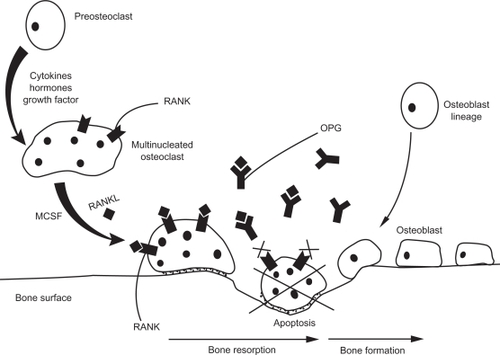Figures & data
Figure 1 Bone turnover through the OPG/RANK/RANKL pathway. The osteoclast precursor matures into a multinucleated cell under the influence of numerous factors such as cytokines, hormones, and growth factors. The multinucleated cell differentiates into an activated osteoclast in the presence of MCSF and RANKL. Once activated, the osteoclast starts degrading the bone surface, forming a lacuna. OPG, the decoy receptor of RANKL, inhibits the continuous binding of RANKL on RANK, therefore leading the osteoclast to its apoptosis. Thereafter, bone formation starts with preosteoblasts that have matured into osteoblasts in order to constitute new bone.

Table 1 Correlation between osteoprotegerin and different markers in women
Table 2 Correlation between osteoprotegerin and different markers in men